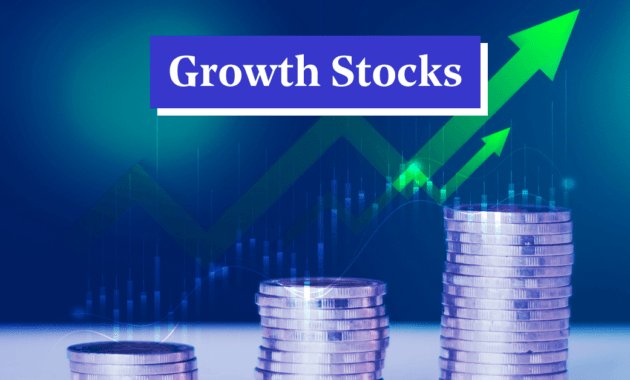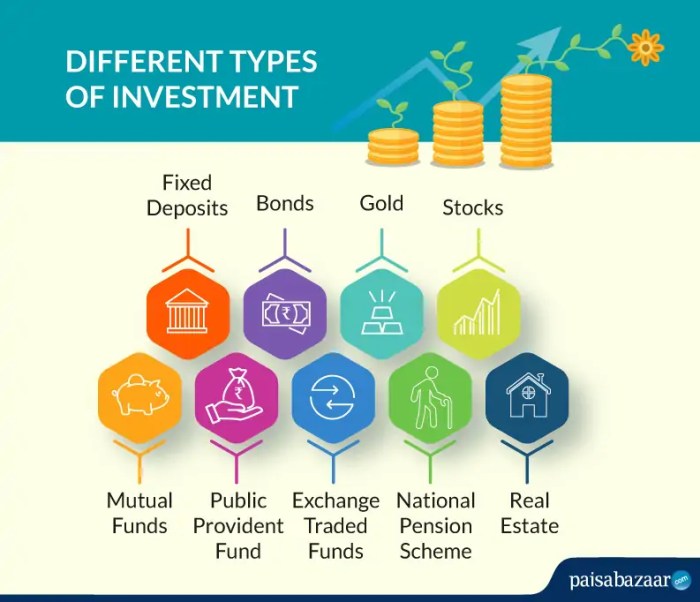High-growth stocks for long-term gains – a lucrative opportunity for investors looking to capitalize on strong market performance and exponential growth potential. In this dynamic landscape, understanding the ins and outs of high-growth stocks is crucial for crafting a successful investment strategy.
As we delve deeper into the realm of high-growth stocks, we uncover key insights into what sets them apart from traditional investments and how to navigate the risks and rewards associated with them.
Understanding High-Growth Stocks

High-growth stocks are stocks of companies that are experiencing rapid and substantial growth in their revenues and earnings. These companies are typically in the growth stage of their life cycle and are reinvesting their profits back into the business to fuel further expansion.
Characteristics of High-Growth Stocks
- High revenue and earnings growth rates: High-growth stocks typically have double-digit revenue and earnings growth rates, far exceeding the average market performance.
- Strong market presence and competitive advantage: These companies often operate in innovative industries and have a competitive edge that allows them to capture market share rapidly.
- High price-to-earnings (P/E) ratios: Investors are willing to pay a premium for high-growth stocks due to their growth potential, resulting in higher P/E ratios compared to other stocks.
Examples of Industries with High-Growth Stocks
- Technology: Companies in the technology sector, such as software-as-a-service (SaaS) providers or cloud computing firms, often exhibit high growth rates due to technological advancements and increasing demand for digital solutions.
- Healthcare: Biotechnology and pharmaceutical companies can experience rapid growth as they develop breakthrough drugs or treatments that address unmet medical needs.
- Renewable Energy: With the global shift towards sustainability, companies in renewable energy, such as solar or wind power, are experiencing high growth as demand for clean energy solutions increases.
Potential Risks of Investing in High-Growth Stocks
- Volatility: High-growth stocks are more susceptible to market fluctuations and can experience significant price swings in a short period.
- Valuation concerns: Due to their high P/E ratios, high-growth stocks may be overvalued, leading to a correction in stock prices if growth expectations are not met.
- Competition and industry risks: Rapidly growing industries attract intense competition, and high-growth companies may face challenges in maintaining their growth trajectory amidst market pressures.
Factors to Consider When Evaluating High-Growth Stocks

When evaluating high-growth stocks, it is crucial to consider a variety of factors that can impact their performance. From key financial metrics to market conditions, conducting thorough research is essential before making any investment decisions.
Key Financial Metrics to Analyze
- Revenue Growth: Look for consistent and strong revenue growth over time, indicating the company’s ability to generate income.
- Earnings Per Share (EPS): Analyze the company’s earnings per share to understand its profitability and potential for future growth.
- Price-to-Earnings (P/E) Ratio: Consider the company’s P/E ratio to determine if the stock is overvalued or undervalued compared to its peers.
- Debt-to-Equity Ratio: Evaluate the company’s debt levels relative to its equity to assess its financial health and risk management.
Impact of Market Conditions and Economic Factors
Market conditions and economic factors can significantly impact the performance of high-growth stocks. For example, changes in interest rates, inflation, and overall market sentiment can influence investor behavior and stock prices. It is important to stay informed about macroeconomic trends and industry-specific developments that may affect the company’s growth prospects.
Importance of Conducting Thorough Research
Thorough research is paramount when investing in high-growth stocks. This includes analyzing the company’s financial statements, understanding its business model, and assessing its competitive position in the market. By conducting comprehensive due diligence, investors can make informed decisions and mitigate risks associated with high-growth investments.
Strategies to Identify High-Growth Stocks
- Growth Investing: Focus on companies with strong growth potential in terms of revenue, earnings, and market share.
- Value Investing: Seek undervalued high-growth stocks that have the potential to outperform the market in the long run.
- Technical Analysis: Use technical indicators and chart patterns to identify buying opportunities and trends in high-growth stocks.
- Fundamental Analysis: Evaluate the company’s financial health, management team, and competitive advantages to determine its long-term growth prospects.
Building a Diversified Portfolio with High-Growth Stocks: High-growth Stocks For Long-term Gains

When it comes to building a diversified investment portfolio, high-growth stocks play a crucial role in potentially maximizing long-term gains. These stocks have the potential to outperform the market and generate substantial returns over time.
The Role of High-Growth Stocks in a Diversified Portfolio
High-growth stocks can provide the opportunity for significant capital appreciation, making them an attractive option for investors looking to achieve above-average returns. By including these stocks in a diversified portfolio, investors can access the growth potential of innovative companies and industries.
Tips for Balancing High-Growth Stocks with Other Investments, High-growth stocks for long-term gains
– Consider your risk tolerance and investment goals when deciding the allocation of high-growth stocks in your portfolio.
– Balance high-growth stocks with stable, dividend-paying stocks to mitigate risk and ensure consistent returns.
– Diversify across different sectors and industries to reduce the impact of market-specific risks on your portfolio.
Significance of Risk Management with High-Growth Stocks
Risk management is crucial when investing in high-growth stocks, as they can be more volatile and susceptible to market fluctuations. Implementing risk management strategies such as setting stop-loss orders and regularly reviewing your portfolio can help protect your investments.
How Diversification Mitigates Risks Associated with High-Growth Stocks
Diversification involves spreading your investments across various asset classes, industries, and regions to reduce the overall risk in your portfolio. By diversifying with high-growth stocks alongside other types of investments, you can minimize the impact of any underperformance or volatility in a specific sector or stock.
Long-Term Strategy for Investing in High-Growth Stocks
Developing a long-term investment strategy with high-growth stocks is essential for maximizing returns and achieving financial goals over time. Holding high-growth stocks for an extended period can lead to significant wealth accumulation due to the compounding effect of growth. Let’s explore the benefits of a long-term approach to investing in high-growth stocks and how successful investors have leveraged this strategy for substantial gains.
Benefits of Holding High-Growth Stocks for an Extended Period
- High-growth stocks have the potential to outperform the market and generate substantial returns over time.
- By holding onto high-growth stocks for the long term, investors can benefit from compounding returns, where profits are reinvested to generate even higher gains.
- Long-term holding allows investors to ride out market volatility and short-term fluctuations, focusing on the overall growth trajectory of the company.
- Investors who maintain a long-term perspective with high-growth stocks can reduce the impact of trading fees, taxes, and other costs associated with frequent buying and selling.
Examples of Successful Investors Achieving Long-Term Gains
- Warren Buffett, known for his long-term value investing approach, has achieved significant wealth by holding onto high-quality stocks for extended periods.
- Peter Lynch, former manager of the Magellan Fund, demonstrated the power of long-term investing by identifying growth opportunities early and staying invested through market cycles.
- Cathie Wood, founder of ARK Invest, has gained recognition for her focus on disruptive innovation and long-term growth prospects, resulting in impressive returns for her investment funds.
Adapting Investment Strategies Based on Performance
- Monitor the performance of high-growth stocks regularly to assess whether the growth thesis remains intact and the company continues to execute on its growth strategy.
- Consider rebalancing your portfolio by trimming positions in stocks that have significantly appreciated and reallocating funds to new high-growth opportunities.
- Stay informed about industry trends, competitive dynamics, and macroeconomic factors that may impact the growth prospects of your investments, adjusting your strategy accordingly.
Conclusive Thoughts
In conclusion, high-growth stocks offer a promising avenue for long-term wealth accumulation, provided investors approach them with caution and due diligence. By incorporating these high-potential assets into a well-rounded investment portfolio, individuals can set themselves up for financial success in the years to come.

